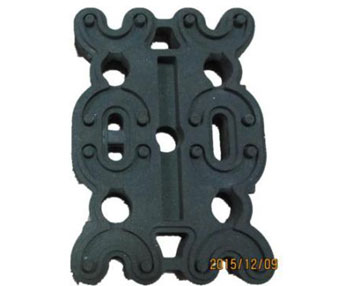Water jacket sand core of cylinder head made by Ceramic Foundry Sand RCS
Single core piece for shell method(Ceramic Foundry Sand RCS)
Castings clutch with gating system made by shell method
The RCS using ceramic sand has more excellent advantages:
- Higher refractoriness—-to cast metals with high pouring temperature (cast steel, alloyed cast steel, stainless steel, etc.)
- High strength and toughness—–to produce more complicated cores with thin sections.
- Lower thermal expansion—–to avoid expansion defects
- Higher reclamation yields—-to reduce waste sand disposal, to decline costs.
- Excellent flowability —–to make complicated cores.
- Lower binder consumption—–lower gas evolution,lower manufacturing costs
- Inert chemical characteristics—–can applied in any popular alloys,includes Manganese steel.
- Longer storage period.
Taking advantages of Ceramic Foundry Sand, people can make high quality resin coated ceramic foundry sand, which has exceptional properties such as high refractoriness, low thermal expansion, easy to shakeout, high strength, and less gas evolution. For particularly complex cores, resin coated ceramic foundry sand has good flow-ability, which can solve the problem of being not fully formed.
The shell process of the ceramic foundry sand is of high production efficiency. The casting dimensional accuracy and the castings finish are exceptional. The used sand is easy to recycle, which greatly reduces the emission of solid wastes. The environmental benefits of this process are also remarkable.
Properties of RCS using Ceramic Foundry Sand(typical)
| Resin addition,% | Tensile strength,MPa | Bending strength ,MPa | Thermal bending strength,MPa | Gas evolution, ml/g | Softening point,℃ | LOI,% | GFN |
| 1.9 | 2.8 | 6.3 | 2.5 | 11.3 | 92 | 1.8 | AFS 58 |





